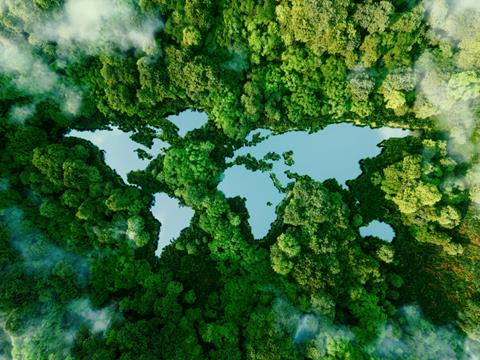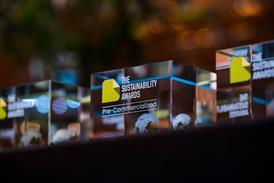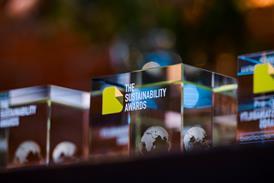
In this article Njoki Kangethe, sustainability consultant and writer at EcoNjia, details the ‘green divide’ - a gulf between how sustainability is lived, discussed, and funded in wealthy nations versus the realities in the Global South.
When I was studying in the Netherlands, sustainability looked effortless. The streets were lined with cyclists whizzing past on solar-powered bikes, every café had its own compost bin, and you could refill your water bottle at public fountains without worrying about getting sick. Sustainability there wasn’t just policy, it was woven into the rhythm of everyday life.
Back home in Kenya, ‘sustainability’ meant something far less glossy. It meant mothers walking longer each year to find water as boreholes ran dry. It meant watching informal settlements flood after one night of heavy rain, sweeping away homes and livelihoods. It meant rivers choking with plastic waste because recycling systems are patchy at best. In the Netherlands, sustainability was a choice. In Kenya, it was survival.
This stark contrast is what I’ve come to call the green divide; a gulf between how sustainability is lived, discussed, and funded in wealthy nations versus the realities in the Global South.
A crisis of funding
Let’s start with the money. According to the Climate Policy Initiative, only about 27% of global climate finance flows to the Global South, and much of that comes in the form of loans rather than grants. Imagine being handed a bill for a disaster you didn’t cause. That’s exactly the position many developing countries find themselves in; saddled with debt while trying to respond to a climate crisis largely fueled by the industrial past of the Global North.
In my consulting work with EcoNjia, I’ve seen how this lack of funding strangles innovation. A community group in Nairobi’s Kibera slum once showed me their homegrown recycling program: volunteers collecting plastic waste and trading it for school supplies for children. It worked beautifully, until they ran out of money to pay for transport and sorting. Meanwhile, in Europe, multi-million-euro pilot projects are launched with ribbon-cutting ceremonies and glossy PR videos. The imbalance isn’t just unfair; it’s unsustainable.
Technology that doesn’t translate
During my MSc, I sat through a seminar on green hydrogen technology. The models were impressive, the presenters brilliant. But halfway through, my mind drifted to the farmers I know in rural Kenya who still rely on diesel-powered pumps to irrigate their fields. The disconnect was jarring.
Innovations that thrive in Amsterdam often fail in Kisumu, not because communities don’t want them, but because they’re designed without our context in mind. A wind turbine might work wonders in a breezy coastal town, but drop it in an inland village without trained technicians, spare parts, or grid integration, and it becomes an expensive sculpture.
It’s not just about technology transfer; it’s about technology adaptation. We need innovations built for our climates, our economies, and our realities. That requires research funding, collaboration, and, perhaps most importantly, listening to the people who will use the technology.
Representation: a seat at the table, or just in the photo?
Representation at global climate forums is another fault line. I’ve attended international conferences where delegates from the Global South were physically present but had no real influence over the agenda. Our stories are often relegated to side events or “human interest” panels, while policy drafting happens elsewhere.
And yet, solutions born in our communities are some of the most resilient and adaptive in the world. Take indigenous forest stewardship in Kenya’s Mau Forest, where local communities guard biodiversity and water sources without multi-million-dollar budgets. Or the informal recycling networks in Nairobi, which keep thousands of tonnes of waste out of landfills each year without government funding.
When these grassroots successes are dismissed as “small-scale,” the world misses an opportunity to scale up approaches that already work.
The emotional weight of the divide
For me, the green divide isn’t just statistics and policy gaps; it’s deeply personal. I remember being a child and visiting my uncle, who at the time was doing well financially. He’d tell me to pick anything I wanted at the supermarket. I’d gravitate towards hair conditioner and little luxuries my parents couldn’t always afford. That generosity shaped how I saw him, and how I saw abundance.
Today, my uncle is ill, and my family is taking care of him. The cycles of life are unmissable. It’s the same with sustainability: communities that once contributed the least to global emissions are now the ones caring for the planet under the heaviest strain. They are doing so not because they’re funded or praised, but because survival leaves them no choice.
Bridging the divide
Closing the green divide requires more than charity. It demands equity, in funding, in technology, and in decision-making power. That looks like:
- Grant-based climate finance that prioritizes the most vulnerable communities over the most visible projects.
- Co-designed technology that works in our contexts, with local training, repair networks, and cultural adaptation built in.
- Equal representation in policy spaces, where Global South voices are not just invited but empowered to shape the agenda.
It also requires a shift in mindset from the Global North: sustainability is not something you export; it’s something you co-create.
A call to action
I often think back to that contrast between the Netherlands and Kenya, two worlds living under the same climate emergency, but experiencing it through entirely different lenses. One can afford to debate the aesthetics of solar panels; the other is debating which crops might survive next year’s drought.
We cannot afford for the green divide to widen any further. The climate crisis is not a waiting game. If we delay funding, technology, and representation for the Global South, we are not just failing billions of people; we are sabotaging the fight for the planet itself.
The next time you read about an innovation in sustainability, ask yourself: could this work in Nairobi? In Dhaka? In Port-au-Prince? If not, then perhaps it’s not the global solution we think it is.
Because sustainability that leaves the Global South behind isn’t sustainability at all.
If you liked this story, you might also enjoy:
The ultimate guide to the Packaging and Packaging Waste Regulation in 2025
How are the top brands progressing on packaging sustainability?
Everything you need to know about global packaging sustainability regulation in 2025
The key to increasing the use of reusable packaging in supermarkets
















No comments yet